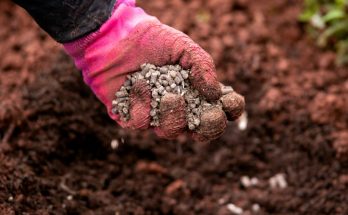
Zinc might be tiny, but it plays a huge role in the growth and development of plants. It’s an essential micronutrient that plants need in small amounts for various vital functions. Zinc is a key component of many enzymes and proteins in plants. It is one of eight essential micronutrients. Inadequate Zn availability in soil is a main consideration for plant nutrition, resulting in a significant loss in production and grain nutrient content. Zinc toxicity in plants can cause stunted growth, reduced yield etc.
♻️ Why Do Plants Need Zinc?
▪️Enzyme Activation: Zinc helps activate enzymes that are crucial for different plant processes like photosynthesis, hormone regulation, and protein synthesis.
▪️Cell Division: It aids in cell division and growth, essential for overall plant development.
▪️Protein Synthesis: Zinc is necessary for making proteins, which are the building blocks of plants.
♻️ Deficiency Symptoms:
When plants don’t get enough zinc, they show signs of deficiency, such as:
▪️Stunted Growth: Plants may not grow well and might appear stunted.
▪️Yellowing Leaves: Leaves might turn yellow between the veins, a condition called chlorosis.
▪️Reduced Yield: Plants might produce fewer fruits or seeds.
▪️Poor Root Development: Zinc deficiency can hinder root growth.
♻️ Sources of Zinc for Plants:
▪️Soil: Plants absorb zinc from the soil through their roots.
▪️Organic Matter: Organic materials like compost or manure can provide zinc to the soil.
▪️Fertilizers: Some fertilizers contain zinc to supplement soil lacking in this nutrient.
▪️Zinc Foliar Sprays: Spraying a zinc solution on leaves can also help plants absorb this nutrient.
♻️ Consequences of Excess Zinc (Zinc Toxicity) in Plants:
▪️Root Damage: Too much zinc can harm the roots, affecting their ability to absorb water and nutrients from the soil.
▪️Reduced Iron Uptake: Excess zinc can interfere with the uptake of other important nutrients like iron, leading to deficiencies.
▪️Stunted Growth: High levels of zinc can hinder plant growth and development, causing stunted or distorted growth patterns.
▪️Leaf Discoloration: Leaves might show signs of discoloration, such as yellowing or browning, due to zinc overload.
▪️Reduced Photosynthesis: Zinc toxicity can disrupt photosynthesis, impacting a plant’s ability to produce its food.
Zinc might be needed in small quantities, but its role in the growth and health of plants is enormous. From enzyme activation to cell growth, zinc is a vital player in ensuring plants thrive and produce abundantly. Understanding its importance and ensuring an adequate supply can make a significant difference in the overall well-being of plants. Zinc toxicity can cause stunted growth, reduced yield etc.
Also read about: Copper toxicity and deficiency symptoms.
Article by Rahul Padwal



